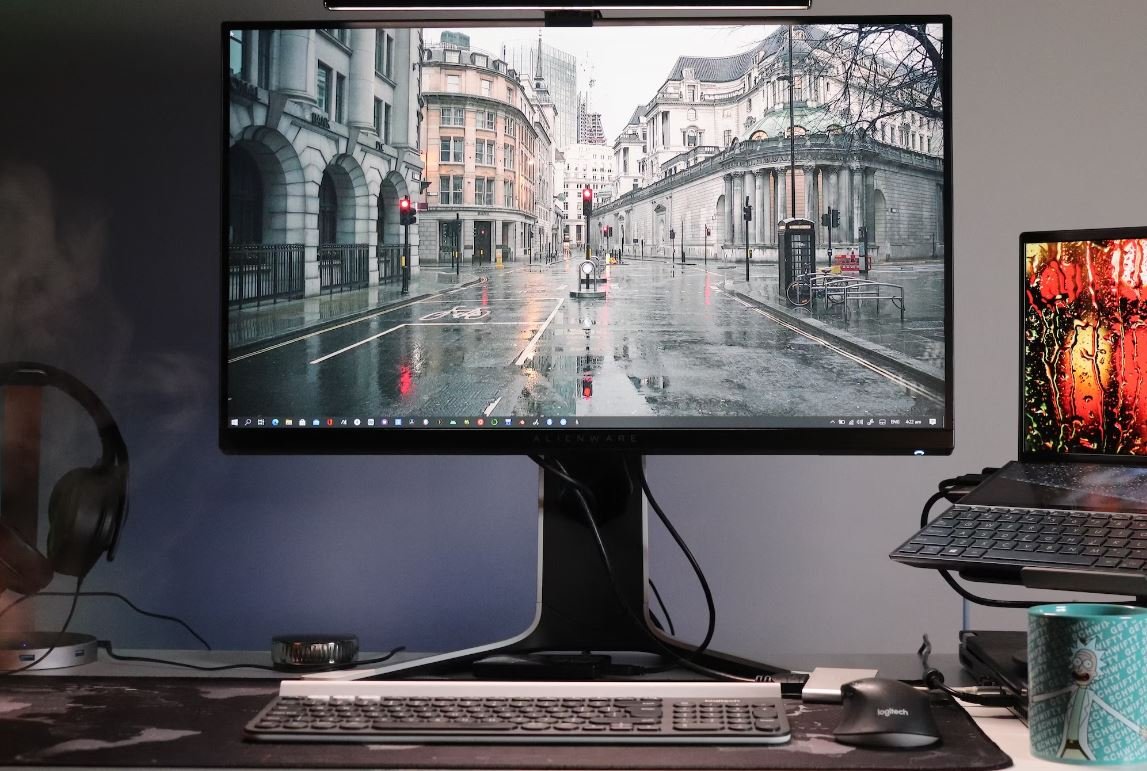Deepfake Software
Deepfake software is a powerful tool that utilizes artificial intelligence (AI) to create manipulated videos that appear to be genuine. With advances in machine learning, deepfake technology has raised concerns about the potential for misuse and its impact on various aspects of society, including entertainment, politics, and privacy. In this article, we will explore the key aspects of deepfake software and its implications.
Key Takeaways:
- Deepfake software utilizes AI to create realistic manipulated videos.
- It has both positive and negative applications, ranging from entertainment and special effects to cyber threats and disinformation.
- Regulation and awareness are crucial to mitigate the potential harm caused by deepfakes.
Understanding Deepfake Software
Deepfake software employs machine learning algorithms, such as deep neural networks, to analyze and synthesize large datasets of images and videos. By training these models on diverse visual content, the software gains the ability to generate highly convincing, artificially manipulated videos.
Deepfake software takes advantage of neural networks to transform facial expressions and mimic speech patterns with remarkable accuracy.
The Impact of Deepfake Technology
The rise of deepfake technology has far-reaching implications for various industries and society as a whole. Here are some of the key areas affected:
- Entertainment Industry:
- Deepfake software enhances special effects, making it easier and more cost-effective to create realistic CGI characters and scenes for movies and television shows.
- It also raises concerns about the ethical use of actors’ likenesses without their consent.
- Politics and Misinformation:
- Deepfake videos can be used to manipulate public opinion and spread misinformation.
- Politicians and public figures may become targets of defamation or character assassination through the creation of malicious deepfake content.
- Privacy and Cybersecurity:
- Deepfake technology poses serious threats to individuals’ privacy, as fabricated videos can be used for blackmail or to create fake evidence.
- Cybercriminals could use deepfake software to impersonate others or gain unauthorized access to personal and sensitive information.
Deepfake in Numbers
| Statistic | Value |
|---|---|
| Number of deepfake videos online | Thousands |
| Percentage of deepfakes used for non-consensual pornography | 96% |
| Number of deepfake detection tools available | 40+ |
Addressing the Deepfake Challenge
The rise of deepfake technology calls for proactive measures to tackle the potential risks associated with its misuse. Here are some strategies being employed:
- Legislation and Regulation:
- Some countries have introduced legislation to combat malicious use of deepfakes, particularly in the context of pornography and elections.
- Regulations aim to hold creators and distributors of harmful deepfake content accountable for their actions.
- Increased Awareness and Education:
- Educating the public about deepfakes is crucial to help individuals identify and mitigate the risks associated with these manipulations.
- Media literacy programs can empower individuals to critically evaluate the authenticity of videos they encounter.
- Development of Deepfake Detection Tools:
- Researchers and tech companies are constantly developing and improving software tools to detect deepfakes.
- These tools utilize AI algorithms and trained models to identify inconsistencies and artifacts present in manipulated videos.
Deepfake on the Rise: Recent Trends
| Year | Number of Reported Deepfake Cases |
|---|---|
| 2018 | 2,600 |
| 2019 | 14,000 |
| 2020 | 37,000 |
Final Thoughts
Deepfake software presents both exciting possibilities and significant challenges. It is crucial to explore the boundaries between its positive applications and potential risks to ensure a safe and responsible use of this technology. By staying informed, promoting awareness, and embracing regulations and countermeasures, we can mitigate the potential harm associated with deepfakes.

Common Misconceptions
Misconception 1: Deepfake software is only used for malicious purposes
- Deepfake software has gained notoriety for its potential misuse, but it has various positive applications as well.
- It can be employed in the movie industry to create realistic special effects, saving time and money.
- Researchers are also using deepfake technology to advance fields like medicine, by studying human behavior for diagnostics.
Misconception 2: Deepfakes are always easily identifiable
- While early deepfake videos had noticeable flaws, recent advancements have made it increasingly difficult to distinguish deepfakes from genuine content.
- Deepfake algorithms continually improve, generating more realistic and convincing videos.
- These advancements raise concerns about the potential for deepfakes to be used to spread misinformation or manipulate public opinion.
Misconception 3: Deepfake technology is expensive and requires advanced technical skills
- Several free or affordable deepfake software tools are available, making the technology accessible to a wide range of users.
- Basic deepfake software typically doesn’t require extensive technical expertise to operate.
- However, creating highly convincing deepfakes may require more advanced technical skills and knowledge.
Misconception 4: Deepfakes are only created using facial swap technology
- While facial swapping is a common application of deepfake technology, it is not the only use.
- Deepfake software can also be utilized to alter voices, generate synthetic text, or even create realistic animations.
- These diverse applications demonstrate the versatility and potential impact of deepfake technology in various fields.
Misconception 5: Deepfake technology is a recent development
- Although deepfake technology gained widespread attention in recent years, the concept dates back to the late 1990s.
- Early developments focused on academic and artistic purposes until the technology became more accessible and advanced.
- Today, deepfake software continues to evolve rapidly, raising ethical concerns and necessitating the development of countermeasures.

Deepfake Software Revolutionizes the World of Media
Deepfake technology has rapidly advanced in recent years, allowing for the creation of highly realistic and often deceptive media content. This powerful software utilizes artificial intelligence and machine learning algorithms, enabling users to manipulate videos, images, and even audio to appear genuine. The rise of deepfake software raises significant concerns about the ethics and potential misuse of this technology. Below are ten captivating tables that highlight the impact and implications of deepfake software in various fields.
Table: Impact of Deepfake Videos on Elections
Deepfake videos have the potential to spread misinformation, manipulate public opinion, and impact political landscapes. They pose a serious threat to the integrity of elections and public trust in the democratic process.
Table: Numbers of Deepfake Videos Detected on Social Media Platforms
The exponential growth of deepfake videos on social media platforms highlights the need for robust detection and removal mechanisms to prevent the dissemination of false information and harmful content.
Table: Deepfake Applications in the Entertainment Industry
Entertainment companies now utilize deepfake technology to entertain audiences, enhance special effects, and bring deceased actors back to the screen. However, this also raises ethical concerns regarding consent and the authenticity of performers.
Table: Increase in Deepfake Fraud Cases
With the rise of deepfake technology, instances of fraud and identity theft are on the rise. Fraudsters can use manipulated images or videos to deceive individuals and gain unauthorized access to their personal information.
Table: Deepfake Technology Adoption in Journalism
Journalists are exploring the use of deepfake technology to create immersive storytelling experiences, but this application also poses challenges, as it blurs the lines between reality and fiction and raises questions of journalistic integrity.
Table: Deepfake Impacts on Reputation and Privacy
Deepfake technology poses a significant threat to individuals’ privacy and reputation. The creation and distribution of realistic but fabricated videos can harm personal relationships, tarnish reputations, and have long-lasting consequences.
Table: Deep Learning Algorithms Accuracy in Detecting Deepfakes
Deep learning algorithms are continually improving their ability to detect deepfake videos, but they still face challenges in identifying and combatting sophisticated manipulations. Ongoing research is essential to enhance detection capabilities.
Table: Deepfake-generated Synthetic Voices Applications
Deepfake software is not limited to altering visual content; it also enables the generation of synthetic voices. This technology has implications for voiceover work, text-to-speech systems, and accessibility tools.
Table: Deepfake Technology Regulations and Policies Worldwide
Given the potential harm and misuse of deepfake technology, governments and organizations around the world are working to establish regulations and policies to mitigate the negative impacts and ensure responsible use.
Table: Public Perception and Awareness of Deepfake Technology
Understanding public perception and awareness of deepfake technology is crucial for developing effective awareness campaigns, education programs, and strategies to combat the spread of misinformation and manipulation.
Conclusion
The rapid evolution of deepfake software presents a double-edged sword, with both positive and negative implications across various domains. While the application of deepfake technology in entertainment and storytelling offers exciting possibilities, it also raises ethical concerns and challenges the authenticity of media content. The alarming potential for misinformation, fraud, and damage to individual reputations necessitates proactive measures such as improved detection algorithms, regulations, and public awareness campaigns to prevent abuse. Striking an equilibrium between technological advancements and responsible use is crucial to navigate the complex impact of deepfake software on our society.
Deepfake Software
What is deepfake software?
Deepfake software refers to computer algorithms and applications designed to create manipulated photos, videos, or audios that can showcase people saying or doing things they never said or did in reality. This technology uses artificial intelligence to analyze and manipulate existing content, blending it seamlessly to create realistic yet fabricated media.
How does deepfake software work?
Deepfake software utilizes machine learning techniques, particularly convolutional neural networks, to analyze and alter existing videos or images of a person. The software learns patterns, features, and expressions specific to the individual, enabling it to generate realistic simulations of that person’s appearance and behavior in a different context or situation.
What are the potential uses of deepfake software?
While deepfake software can be misused for spreading misinformation, there are legitimate applications for this technology as well. It can be used in the film industry for special effects and visual storytelling, in academic settings for research purposes, and for creating realistic simulations for virtual reality experiences.
What are the ethical concerns surrounding deepfake software?
The widespread availability of deepfake software raises concerns about the potential for misuse, manipulation, and threats to privacy. It can be used for spreading fake news, framing innocent individuals, or defaming public figures. Deepfake technology also raises questions about consent, as it can be used to create fabricated content without the knowledge or permission of the person involved.
How can deepfake software be detected?
Detecting deepfake content poses a challenge, as the technology used to create deepfakes continually improves. However, there are various methods researchers and experts use to identify potential deepfakes, such as analyzing visual anomalies, artifacts, or discrepancies in the manipulated media. Furthermore, the development of advanced AI-driven detection software and collaboration between technology companies may aid in detecting deepfakes more effectively.
What are the legal implications of deepfake software?
Deepfake technology raises numerous legal concerns, including defamation, intellectual property infringement, privacy violations, and potential misuse for illegal activities. Legislation is being developed in some countries to regulate the creation and distribution of deepfakes, but legal frameworks are still in the early stages of development.
Can deepfake software be used for malicious purposes?
Yes, deepfake software can be misused for various malicious purposes. It can be used to create fake news, manipulate elections, blackmail individuals, or create pornography featuring individuals without their consent. The potential for abuse is a significant concern, necessitating increased awareness, regulation, and countermeasures to protect individuals from these malicious activities.
Are there any potential positive impacts of deepfake software?
While deepfake technology primarily raises concerns, there are potential positive impacts as well. For example, it can be used in the entertainment industry to create realistic digital doubles of actors for stunts or dangerous scenes. Deepfake software also enables the preservation and restoration of historical footage by improving its quality or filling in missing frames.
How can individuals protect themselves against deepfake attacks?
To protect oneself against deepfake attacks, it is essential to remain cautious and skeptical of media encountered online. Avoid sharing unverified or suspicious content, and be vigilant about personal information shared on social media platforms. Staying informed about the latest developments in deepfake detection technology can also help individuals recognize and avoid potential threats.
Is there any ongoing research to combat deepfake threats?
Yes, there is ongoing research in academia, industry, and technology companies to develop effective deepfake detection methods. Collaboration among experts and organizations is crucial to developing robust countermeasures against deepfake threats. Additionally, public awareness campaigns serve to educate individuals about the existence and potential dangers of deepfake technology.




